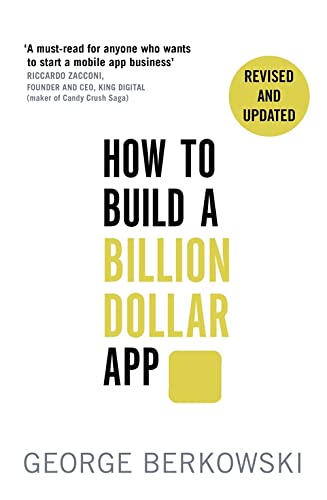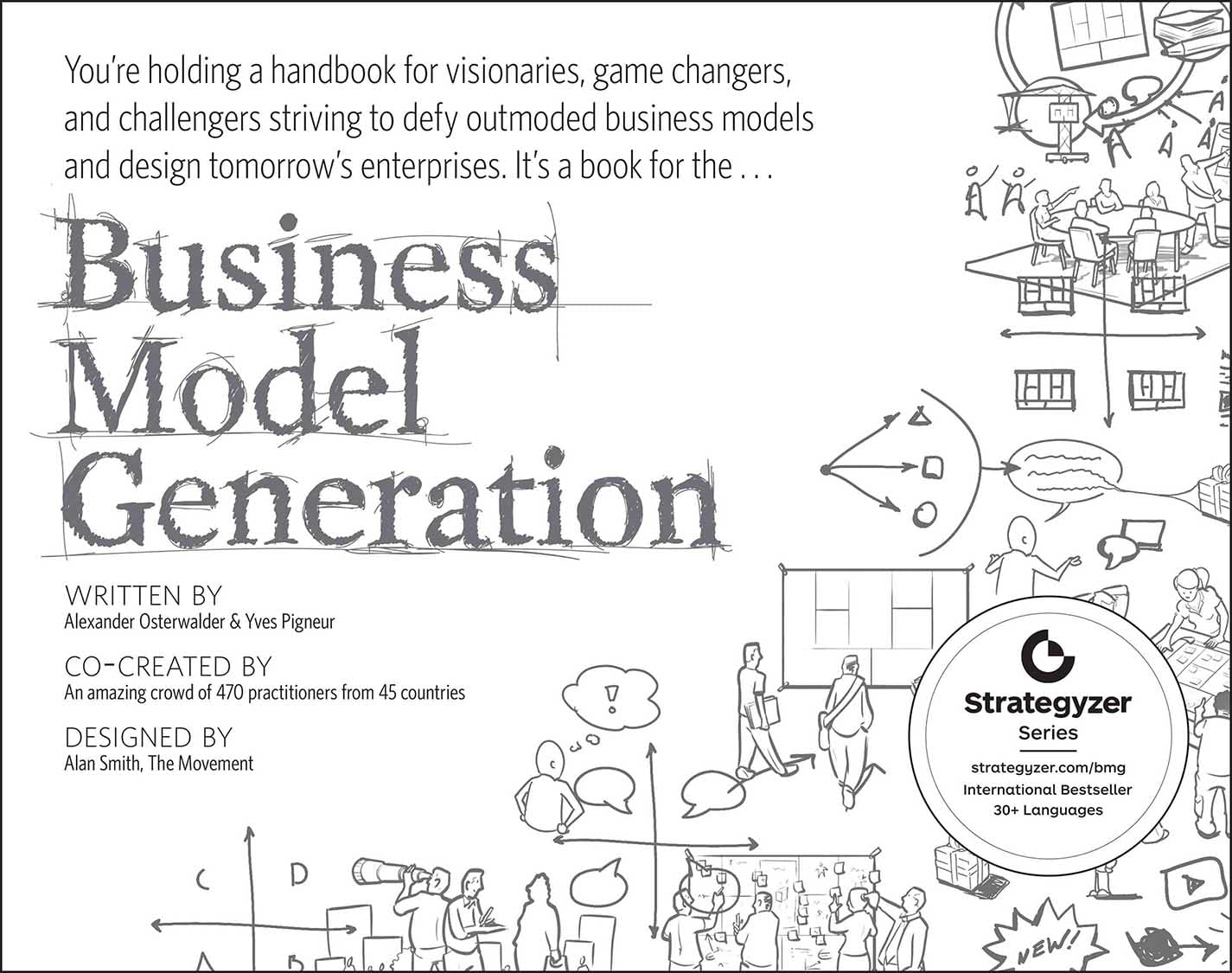Every Business Book I Ever Read
For the past few years, I've read many books that I gained value from. I take notes, yet time lets me forget what was once valuable to me when reading it. This article is my personal antidote: A high-level overview containing my key summaries from each of these books.

This article serves as my personal memory extension: Short summaries of all the books I want to keep the knowledge of. I keep this for my own reference and assume that your personal key takeaways would differ, yet I also believe that this overview is helpful for others as well!
Contents
The Lean Startup
The Lean Startup offers an actionable methodology for developing and launching new products and businesses that emphasizes rapid prototyping, iterative experimentation, and continuous feedback. It encourages entrepreneurs to focus on creating a minimum viable product (MVP) and then using customer feedback to continually improve and refine the product or service. The approach aims to minimize waste, reduce risk, and increase the chances of success by quickly identifying and addressing potential issues.

The Lean Startup
How Today's Entrepreneurs Use Continuous Innovation to Create Radically Successful Businesses
by Eric Ries
Favorite Quote
Innovation is not about saying yes to everything. It's about saying NO to all but the most crucial features.
This quote from the book emphasizes the importance of focus and simplicity in the startup process. By saying no to extraneous features, entrepreneurs can focus on creating a minimal viable product that addresses the most important needs of their customers, and then iterating on that product based on feedback. By avoiding feature creep and staying focused on the core value proposition, startups can minimize the time spent on learning the crucial factors for their success.
Key Takeaways
You may be in a startup without knowing it: Eric Ries defines a startup as "a human institution designed to deliver a new product or service under conditions of extreme uncertainty." – something that must not necessarily be a young high-growth company founded by a bunch of tech nerds.
The primary goal of an early-stage startup is learning: Traditional financial metrics value profit and growth, yet startups need a different set of metrics. Startup metrics should be focused on structured, continuous, validated learning to create a business that both customers and investors love. The book calls this Innovation Accounting.
The Build-Measure-Learn Cycle: The scientific method can and should be applied to startups; To create a hypothesis, formulate a tailored test (Build), perform the test (Measure), and then analyze (Learn) what can be learned. Successful startups transverse this cycle as quickly as possible.
The formulated hypotheses can be categorized in two ways: Growth hypotheses, i.e. how the business will grow, and value hypotheses, i.e. how the product delivers value to customers. These must be treated separately.
The different kinds of MVPs: The book provides four different strategies to quickly build a minimum viable product (MVP) that does not scale and that you may even be embarrassed about – which is important to get you off the ground! It explains the Concierge MVP, the Wizard of Oz MVP, the Landing Page MVP, and the Email MVP.
Read This When ...
... stuck in the process of getting an idea off the ground. The book provides you with a clear path to follow.
The Hard Thing About Hard Things
Building and running a successful company is extremely difficult, and there are no easy solutions or shortcuts to success. Ben Horowitz's book emphasizes the importance of strong leadership, clear decision-making, and effective communication in navigating the many challenges that arise when building a business. Additionally, the book stresses the importance of maintaining a positive attitude and a strong sense of purpose, even in the face of adversity. If you've ever worked on a tough challenge with people, I'm sure you will find many things to relate to.
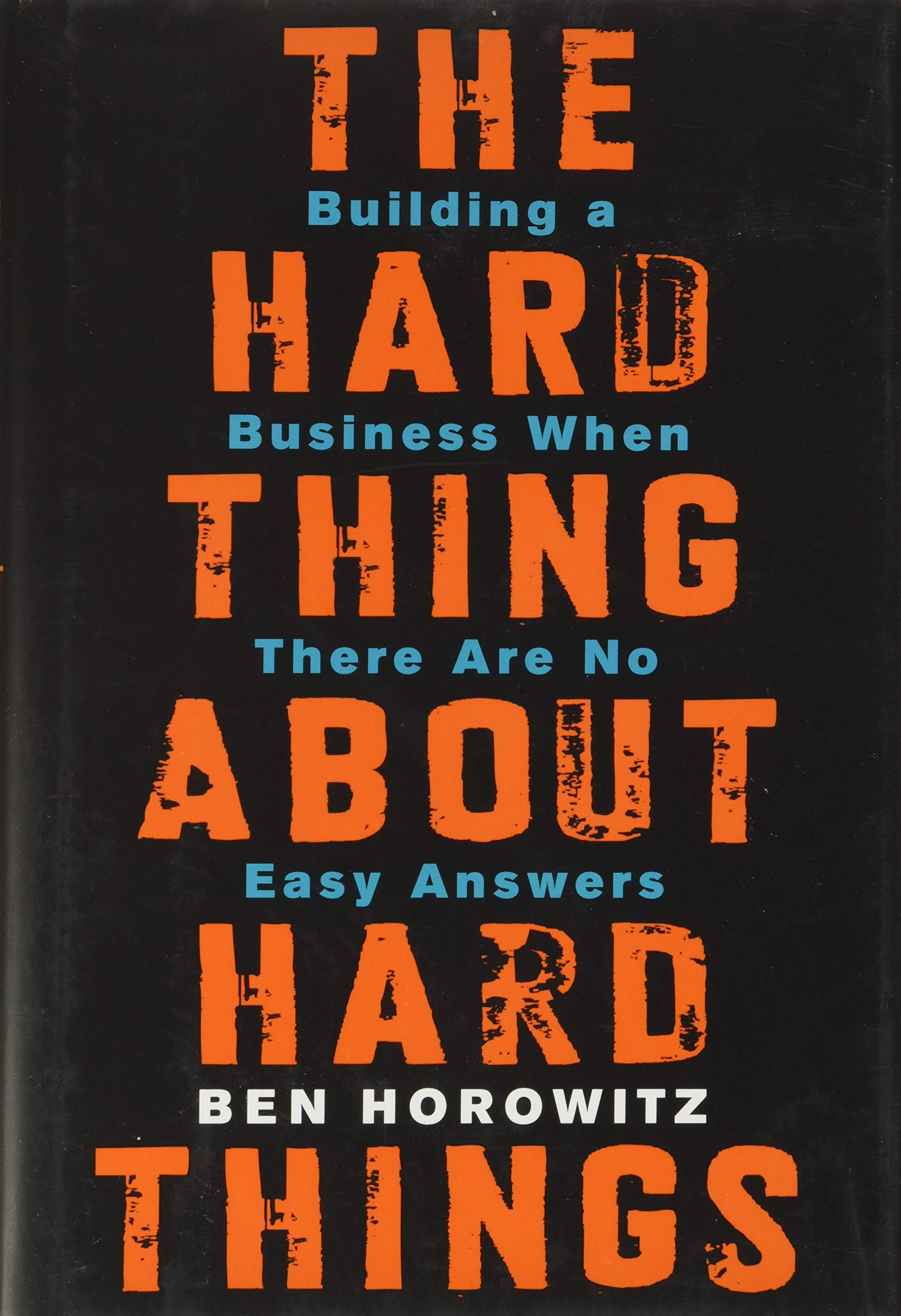
The Hard Thing About Hard Things
Building a Business When There Are No Easy Answers
by Ben Horowitz
Favorite Quote
The Struggle is where greatness comes from.
The quote highlights that you will encounter The Struggle somewhere along the way of turning a vision into a truly great company or project. The Struggle is when things start to get hard. When you must persevere in the face of adversity. The Struggle is where many people quit. How to manage and persevere through that Struggle is what distinguishes a truly great leader, company, and team from a mediocre one.
Key Takeaways
You must build and keep a strong mind: It will get hard and you will struggle on a very personal level. You must be able to cope with this sort of stress mentally. Unfortunately, there also is no silver bullet to navigate this struggle, and you will have to find out for yourself. Ben Horowitz shares a few things that helped him, such as getting whatever worries you out on paper, which helps me a lot too.
Building a successful company is difficult: There are no easy solutions or shortcuts to success. If you want to build a truly great, large company, there are no magic silver bullets – just a lot of heavy lead bullets (paraphrasing Ben Horowitz here). Things will get hard at times and if you believe in your company, you must keep going.
Strong leadership is essential for navigating the many challenges that arise when building a business. Positive leadership is easy when things go well, but hard environments really separate strong leadership from weak ones. Clear decision-making and effective communication are also critical, especially when margins for errors are low.
Tell it like it is: Ben Horowitz calls this one of his most important management lessons: Stop being too positive and communicate things how they are – even if it's bad news. Being transparent about your problems builds trust, involves more brains in solving the hard problems (as more brains even know that problems exist), and also encourages everyone to raise awareness for problems.
Don't quit: There will be many times when you feel like quitting. According to Horowitz, great CEOs face the pain. They deal with the sleepless nights and the cold sweats. Great CEOs don't quit.
Read This When ...
... you're building a company or leading a team. Especially if things get harder than initially envisioned.
Zero To One
The book is focused on Peter Thiel's views on entrepreneurship and how to create a successful startup. Thiel argues that in order to create something truly new and valuable, entrepreneurs should strive to create a monopoly in their market. He also discusses the importance of thinking "zero to one" – meaning something that doesn't exist yet – as opposed to "one to n" when starting a new venture.
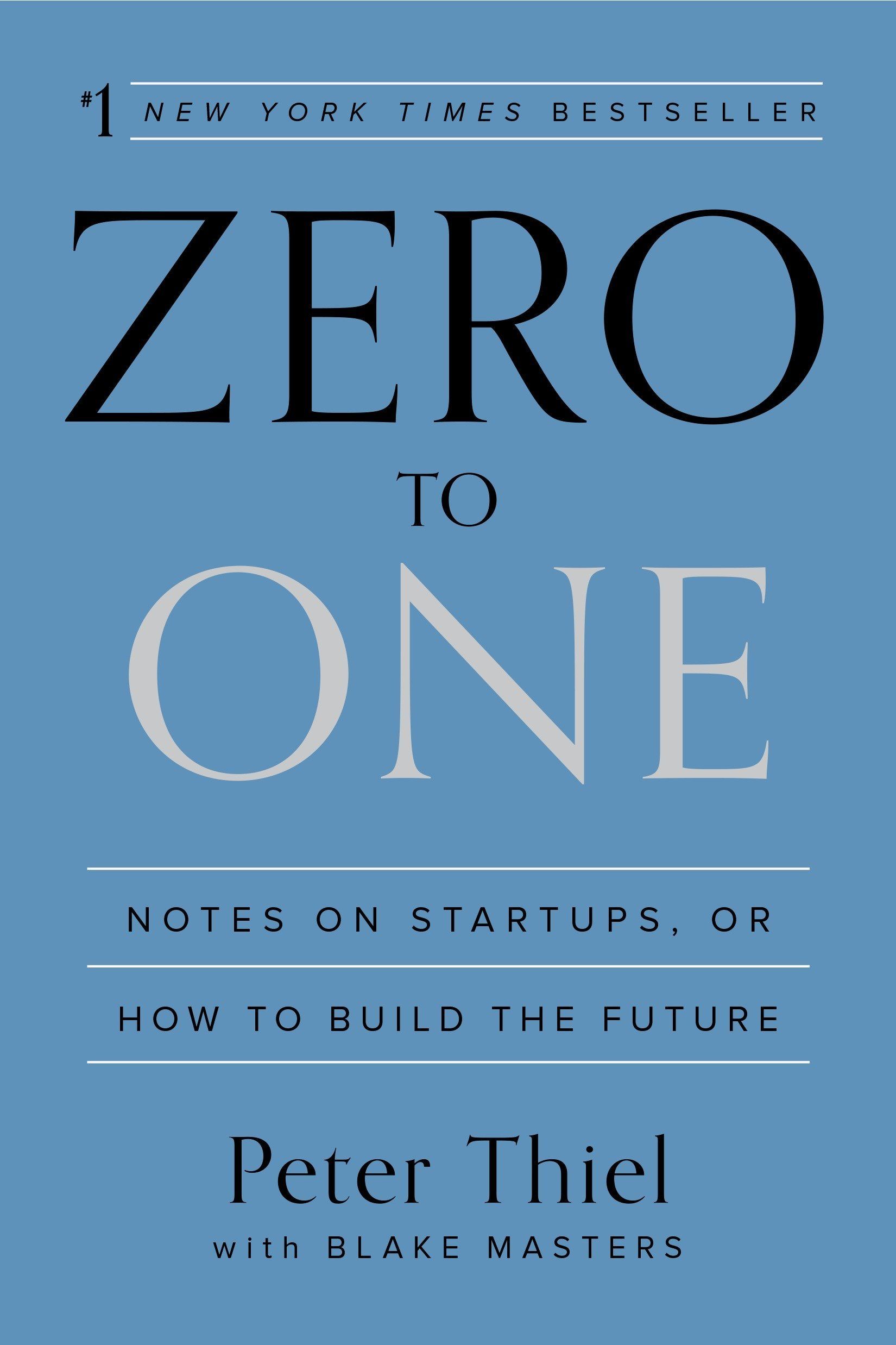
Zero to One
Notes on Startups, or How to Build the Future
by Peter Thiel with Blake Masters
Favorite Quote
The future is not a spreadsheet: it's a landscape of wild possibilities, and the most powerful pattern is not linear, but exponential.
This quote highlights Thiel's belief that the future is uncertain and that entrepreneurs should be prepared for the unexpected. He also emphasizes the importance of thinking about the long-term potential of their ideas and the possibility of exponential growth.
Key Takeaways
Create a monopoly: To create something truly valuable and new, strive to create a monopoly in your market by identifying and solving a unique problem that others have not yet tackled. By providing a solution that is not available elsewhere, you will be able to charge higher prices and invest more in growth and innovation. Additionally, having a monopoly allows you to be insulated from the competition and to have more control over the market.
Think "Zero to One": Instead of copying existing ideas, focus on creating something that does not yet exist, and that is truly new and valuable. This is the way to create a breakthrough innovation rather than incremental advancements and to truly make a difference in your industry.
Build a team of talented and driven individuals: Building a strong team is crucial for the success of a startup. A team of talented and driven individuals who share your vision and passion for the project will help you overcome obstacles and achieve your goals. It's important to build a culture in which everyone is working towards a common goal, and where everyone feels valued and respected.
Create a long-term vision for your business and think beyond short-term gains. A long-term vision is important for staying focused and motivated in the face of obstacles and setbacks. This vision should be a clear and compelling picture of the future you are working towards and should guide your decisions and actions. It also helps you to stay resilient and persistent even when things get tough.
Keep secrets: Keeping secrets about your technology, business model, or other key aspects of your operations can give you a significant advantage over competitors who do not have access to this information. This can include information about your product, your sales strategy, your target market or even your funding sources. Keeping these secrets can prevent competitors from copying your ideas or from knowing your plans, giving you an edge in the market.
Read This When ...
... planning your next venture.
How To Build a Billion Dollar App
Before reading this book, the title seemed a bit too catchy for me, yet I was very positively surprised by its content! It's a book that provides insights and strategies for building a successful app business based on interviews with some of the most successful app entrepreneurs of our time. George Berkowski covers a wide range of topics in the book, including product development, marketing, user acquisition, and scaling. The book also provides practical advice on how to develop and launch an app, and how to grow and scale an app business. I especially like that it's broken down into different "stages" your business will be in (that also match my personal experience) and offers actionable advice for each stage. Overall, the book aims to provide a comprehensive guide for entrepreneurs and developers looking to build a successful app business.
Favorite Quote
The key to a successful app is to solve a real problem for a large number of people in a unique and compelling way.
This quote emphasizes the importance of identifying a problem that people care about and creating a solution that solves it. Berkowski suggests that by focusing on solving a real problem, an app will be more likely to be successful because it will have a built-in user base that needs and wants the solution. Additionally, by creating a unique and compelling solution, the app will be able to differentiate itself from competitors and stand out in the crowded app market.
Key Takeaways
Identify a problem that people care about and create a solution that solves it: The first step to building a successful app is to identify a problem that people care about and create a solution that solves it. This can be done through market research, talking to potential users, and understanding the needs and pain points of your target audience. Once you have identified a problem, it is important to create a solution that is unique and compelling, and that differentiates itself from competitors.
Create a business model that is sustainable and can generate revenue: In order to build a successful app, it is important to have a sustainable business model that can generate revenue. This can be done through a variety of methods, such as advertising, in-app purchases, subscriptions, or a freemium model. It is important to have a clear monetization strategy in place from the start and to continuously test and optimize it to ensure it is working effectively.
Understand your target audience and use that knowledge to acquire users effectively: Understanding your target audience is crucial to acquiring users effectively. This can be done through market research, talking to potential users, and understanding the demographics and psychographics of your target audience. Once you have a clear understanding of your target audience, you can use that knowledge to develop effective acquisition strategies, such as targeted advertising, influencer marketing, or referral programs.
Continuously iterate and improve your product based on user feedback: Continuous iteration and improvement of your product based on user feedback is crucial to building a successful app. This can be done through testing, A/B testing, user surveys, and other forms of user feedback. It is important to listen to your users and make changes to your app that address their needs and pain points. Additionally, it is important to keep up with the latest trends and technologies to ensure that your app stays relevant and competitive.
Have a clear monetization strategy in place from the start and execute on it effectively: As previously mentioned, having a clear monetization strategy in place is crucial to building a successful app. It is important to have a clear understanding of how your app will generate revenue and to implement that strategy. This can be done by testing different monetization methods and optimizing them to ensure they are working effectively. Additionally, it is important to continuously test and optimize your monetization strategy to ensure that it stays relevant and generates revenue over time, giving you the headroom you need to deliver on your value proposition.
Read This When ...
... building an app business and revisit the stages you're currently in.
Measure What Matters
"Measure What Matters" by John Doerr is a guide on how to implement Objectives and Key Results (OKRs) in companies and organizations. The book was published in 2018 and it is about the use of OKRs, a goal-setting framework developed by Andy Grove at Intel, and how it has been used to drive success at companies such as Google, Intel, and Bono's ONE campaign, as well as the Bill and Melinda Gates Foundation. The book explains how to set and achieve goals using OKRs, and how to apply them to various areas such as business, non-profit and personal life.
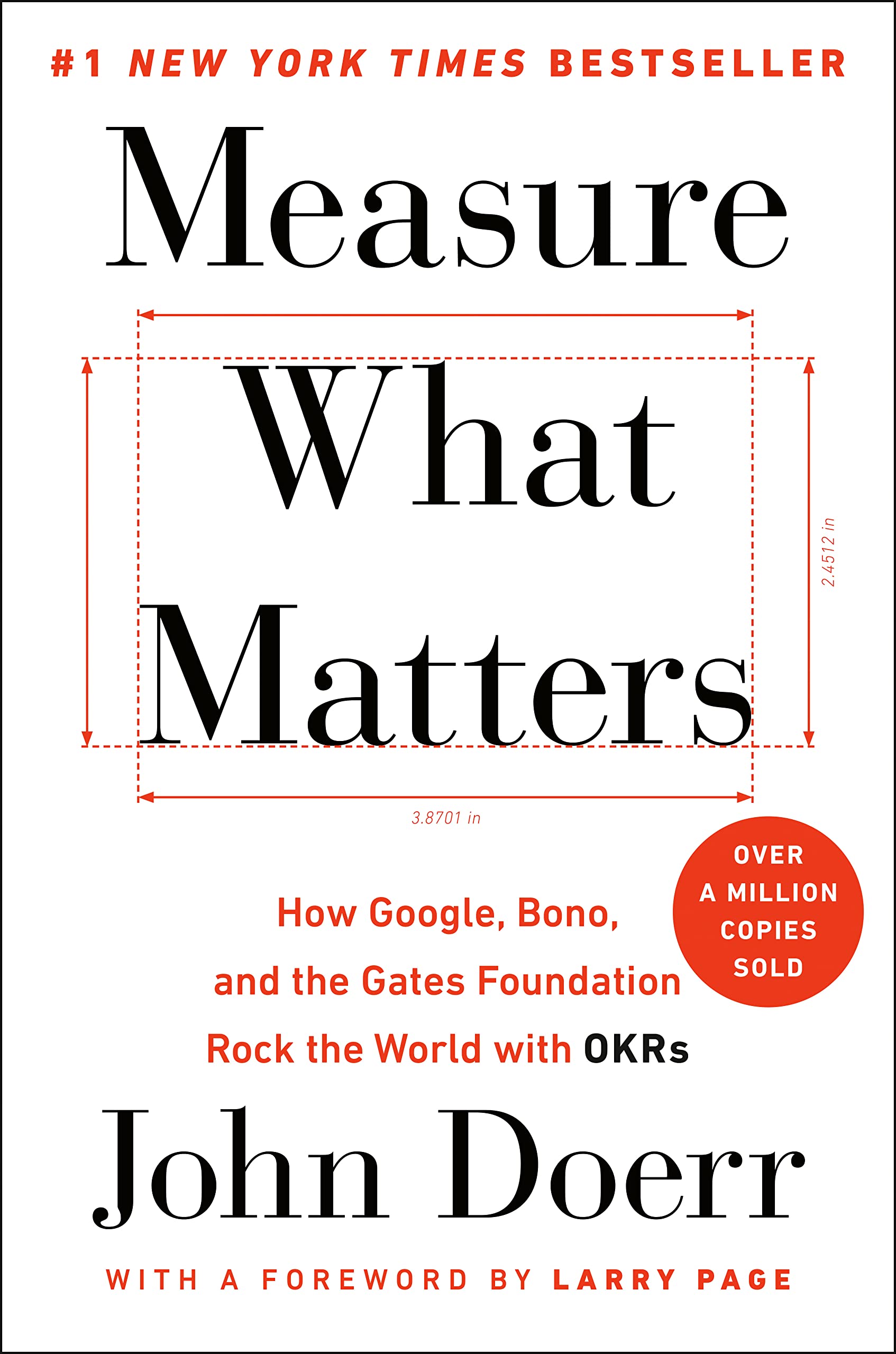
Measure What Matters
How Google, Bono, and the Gates Foundation Rock the World with OKRs
by John Doerr
Favorite Quote
When you get clear on your true north, you can create a clear and compelling vision. And when you share that vision with others, it becomes a shared vision, a source of inspiration and alignment that can motivate and guide everyone in the organization. It is one of the most powerful things you can do as a leader.
This quote speaks to the importance of setting clear and meaningful goals, and how doing so can inspire and motivate individuals and teams to work together towards a common purpose. A purpose that can then be implemented using OKRs.
Key Takeaways
Set clear and measurable objectives: When setting goals, it's important to be specific and use quantifiable metrics to measure progress. This will make it easier to track progress and determine whether the goal has been achieved.
Prioritize and focus on a few key objectives: Instead of trying to accomplish many things at once, prioritize a few key objectives that will have the greatest impact on the business. This will help you stay focused and avoid spreading yourself too thin.
Involve the whole team in goal setting: By involving the entire team in goal setting, you can ensure that everyone is aligned and working towards the same objectives. This can help build a sense of ownership and accountability among team members.
Set ambitious but realistic goals: Aim high, but it's important to ensure that the goals are realistic and achievable. This will keep team members motivated and engaged and will help avoid disappointment and demotivation.
Regularly review and adjust goals: Regularly review progress and adjust goals as needed. By doing so, you can stay on track, course correct and make the necessary adjustments to achieve your objectives.
Read This When ...
... you want to implement a structured goal-setting process.
The Startup Owner's Manual
The Startup Owner's Manual is a step-by-step guide for entrepreneurs on how to build a successful startup. The book is based on the customer development methodology which emphasizes on understanding customer needs and developing products and services that meet those needs. The authors, Steve Blank and Bob Dorf, share their experiences as entrepreneurs and the lessons they've learned along the way. The book covers topics such as creating a business model, building a team, and scaling a company. The book provides practical advice and guidance on the often challenging process of starting and growing a business – one of the true classics in the startup industry.
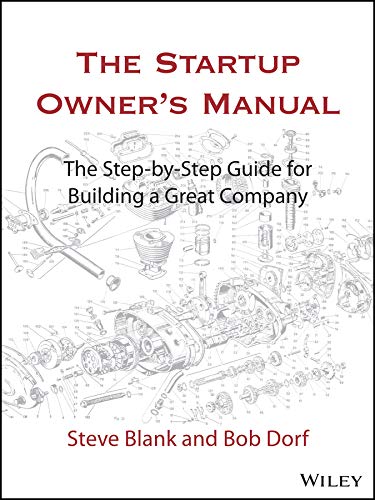
The Startup Owner's Manual
The Step-by-Step Guide for Building a Great Company
by Steve Blank and Bob Dorf
Favorite Quote
No business plan survives first contact with customers.
This quote highlights the need for entrepreneurs to be flexible and adapt to the changing needs of their customers. The original business plan will probably change as the business evolves and interacts with its customers, which is why it's important for entrepreneurs to be open to new ideas and be willing to adapt their plans as necessary.
Key Takeaways
Understand your customers: One of the most important takeaways from the book is the importance of understanding your customers. This means identifying your target market, understanding their needs, and developing a deep empathy for them. To do this, entrepreneurs should engage in customer development, which involves talking to potential customers, conducting surveys, and analyzing data to gain insights.
Develop a business model: Another key takeaway is the importance of developing a clear and compelling business model. This includes identifying the problem you are solving, the value proposition of your product or service, and the revenue streams that will support your business. Entrepreneurs should also consider the key resources and activities required to deliver their value proposition and the partners and suppliers that will be needed to support their business – basically populate a full business model canvas.
Test and validate your assumptions: Before launching your product or service, it's important to test and validate your assumptions about the market, customers, and business model. This can be done through customer development, prototyping, and creating a minimum viable product (MVP). This will help you identify any gaps or inconsistencies in your business model and make adjustments as needed.
Scale your business: Once your business model has been validated, the next step is to scale your business. This means identifying the key metrics that will drive growth, building a team, and developing a go-to-market strategy. Entrepreneurs should also consider how they will manage the risks associated with scaling their business and identify key milestones that need to be achieved.
Continuously iterate and adapt: Building a successful startup is an iterative process. Entrepreneurs must continuously adapt and make adjustments based on feedback from customers and market data. This means that they should be willing to pivot their business model if necessary and to continuously test and validate their assumptions.
Read This When ...
... building a company. Especially if you haven't yet achieved product/market-fit and need inspiration in customer development.
Business Model Generation
"Business Model Generation" is the book that introduced the now widespread Business Model Canvas – a visual tool to design, plan, and test business models. The Business Model Canvas is a tool that helps entrepreneurs and business leaders to understand the key components of a business model, such as value proposition, customer segments, channels, revenue streams, and key resources. The book includes case studies and examples that illustrate how the tool can be used in different industries and contexts, encouraging experimentation and iteration to continually improve and evolve business models. Apart from its widely adopted content, it's also beautifully made and uses many illustrations.
Favorite Quote
Business models are not something you just invent and then forget. They are constantly evolving and adapting to the changing world.
This quote emphasizes the importance of being adaptable and responsive in today's rapidly changing business environment. It suggests that a business model is not a one-time creation, but rather a living, breathing entity that requires constant attention and care. The quote encourages the readers to think about their business models as flexible and dynamic concepts that can be changed and improved over time.
Key Takeaways
Define your business model: A business model is a blueprint for how your business creates, delivers, and captures value. The book provides a visual tool called the "Business Model Canvas" which helps you to map out the key elements of a business model, such as customer segments, value proposition, revenue streams, key resources, and key partners. By defining your business model in this way, you can ensure that all elements are aligned and working together to create a sustainable and profitable business.
Understand your customers: The book emphasizes the importance of understanding the needs, pain points, and preferences of your customers in order to create value for them. This includes identifying their demographics, researching their behavior, and using that information to design products and services that meet their needs.
Create a value proposition: The book explains how a value proposition is a statement that describes the unique value that your business offers to customers. It is crucial to have a clear and compelling value proposition that differentiates your business from the competition. This will help you to attract and retain customers.
Identify and optimize revenue streams: The book explains the importance of identifying and understanding the different ways that your business generates money, which are called revenue streams. It's important to optimize these streams in a way that maximizes revenue and profit, such as pricing strategies, sales, and marketing strategies.
Continuously test and improve your business model: The book encourages entrepreneurs, business owners, and managers to continuously test and improve their business model by gathering feedback from customers, experimenting with new revenue streams, and making adjustments to the business model based on the results. This way, you can ensure that your business model is adaptive and resilient.
Read This When ...
... confronted with business model generation 😉.
Bonus: Business Model Canvas Template
If you're looking for an editable business model canvas template, you can click on the following and start editing online:

Value Proposition Design
Alexander Osterwalder and Yves Pigneur's book "Value Proposition Design" is a companion to "Business Model Generation" and it focuses on the creation and communication of value propositions. The book presents a visual tool called the "Value Proposition Canvas," which is a template for mapping out the key elements of a value proposition in a clear and concise way. The book also includes case studies and examples of how the Value Proposition Canvas can be used in practice. It is a step-by-step guide for creating products and services that customers want, and it provides a framework for testing and validating value propositions with real customers. It also covers how to communicate value propositions effectively in order to attract and retain customers.
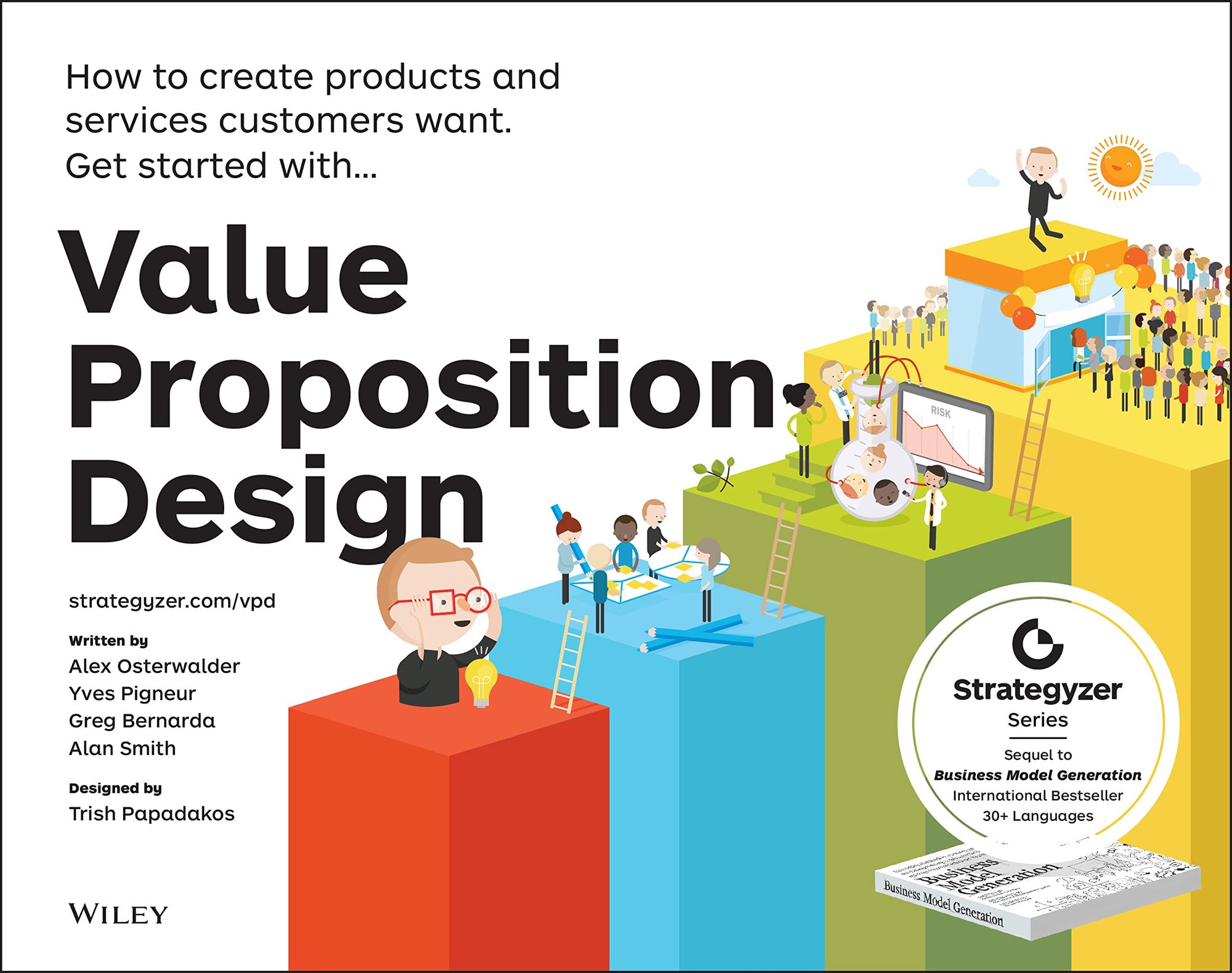
Value Proposition Design
by Alexander Osterwalder, Yves Pigneur, Greg Bernarda, and Alan Smith
Favorite Quote
A value proposition is not a slogan or a tagline, it's a description of the benefits customers can expect, and the unique value that a company will deliver.
This quote highlights the importance of understanding the value that your business offers to customers, and it emphasizes that a value proposition should be more than just a catchy phrase. It should be a clear and detailed description of the specific benefits that customers can expect from your products or services, and how they solve their problems or fulfill their needs better than your competitors.
Key Takeaways
Understand the customer problem: The better you understand your customer's problems, the better you will be able to deliver value to them. This means conducting extensive research to gather information on the customer's needs, wants, and pain points. This information can be used to develop a clear understanding of the problem that the customer is trying to solve, and how the product or service can help to solve it, even beneath the initial scope.
Identify Unique Value: Another key takeaway is the importance of identifying the unique value that a product or service can offer to the customer. This means understanding how the product or service solves the customer's problem in a unique and superior way compared to the competition. This can be achieved by mapping out the customer's needs, pain points, and jobs-to-be-done and comparing it to the offering of the competitors.
Test with Real Customers: You must test value propositions with real customers. This means using the Value Proposition Canvas to help creating a prototype of the product or service and get feedback from potential customers. This will help to validate the assumptions about the customer's needs and the value that the product or service can offer.
Communicate effectively: Another key takeaway is the importance of communicating the value proposition effectively. This means being able to clearly and concisely explain the unique value that the product or service offers to the customer in a way that is easy to understand. This can be achieved by using visual aids like the Value Proposition Canvas.
Continuously improve: A value proposition is not static. You should aim to continuously improve over time. This means using feedback from customers, analyzing the market, and monitoring the competition to identify new opportunities for improvement. It also means being open to changing the value proposition as needed in order to better meet the customer's needs.
Read This When ...
... creating helpful, top-class products or services.
Thank you for reading this far, I hope the article is helpful to you. If you have an input to one of the existing books or a new book suggestion, please let me know! Take care!
– Dominik

